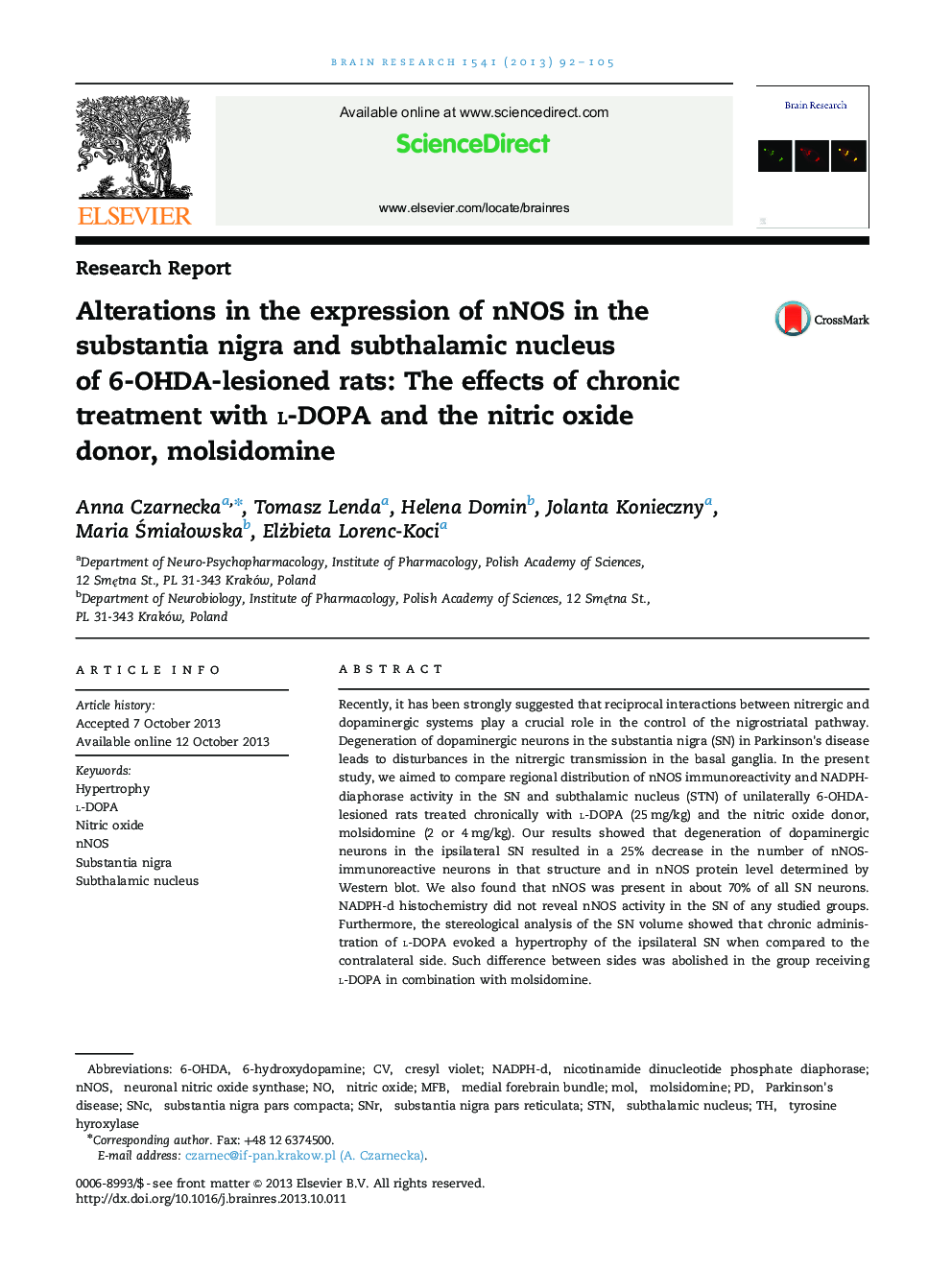| Article ID | Journal | Published Year | Pages | File Type |
|---|---|---|---|---|
| 4324459 | Brain Research | 2013 | 14 Pages |
•Loss of DA neurons leads to decreased expression of nNOS in the SN.•Chronic l-DOPA treatment evokes hypertrophy of the ipsilateral substantia nigra.•nNOS is expressed in all neurons of the subthalamic nucleus.•NADPH-d histochemistry is not always coincident with nNOS immunohistochemistry.
Recently, it has been strongly suggested that reciprocal interactions between nitrergic and dopaminergic systems play a crucial role in the control of the nigrostriatal pathway. Degeneration of dopaminergic neurons in the substantia nigra (SN) in Parkinson's disease leads to disturbances in the nitrergic transmission in the basal ganglia. In the present study, we aimed to compare regional distribution of nNOS immunoreactivity and NADPH-diaphorase activity in the SN and subthalamic nucleus (STN) of unilaterally 6-OHDA-lesioned rats treated chronically with l-DOPA (25 mg/kg) and the nitric oxide donor, molsidomine (2 or 4 mg/kg). Our results showed that degeneration of dopaminergic neurons in the ipsilateral SN resulted in a 25% decrease in the number of nNOS-immunoreactive neurons in that structure and in nNOS protein level determined by Western blot. We also found that nNOS was present in about 70% of all SN neurons. NADPH-d histochemistry did not reveal nNOS activity in the SN of any studied groups. Furthermore, the stereological analysis of the SN volume showed that chronic administration of l-DOPA evoked a hypertrophy of the ipsilateral SN when compared to the contralateral side. Such difference between sides was abolished in the group receiving l-DOPA in combination with molsidomine.Degeneration of the nigrostriatal pathway had no influence on the number of nNOS-ir neurons in the STN. NADPH-histochemistry revealed nNOS activity only in a part of neurons of that structure.Our results make an essential contribution to the research on the role of nitric oxide in the regulation of basal ganglia function.
